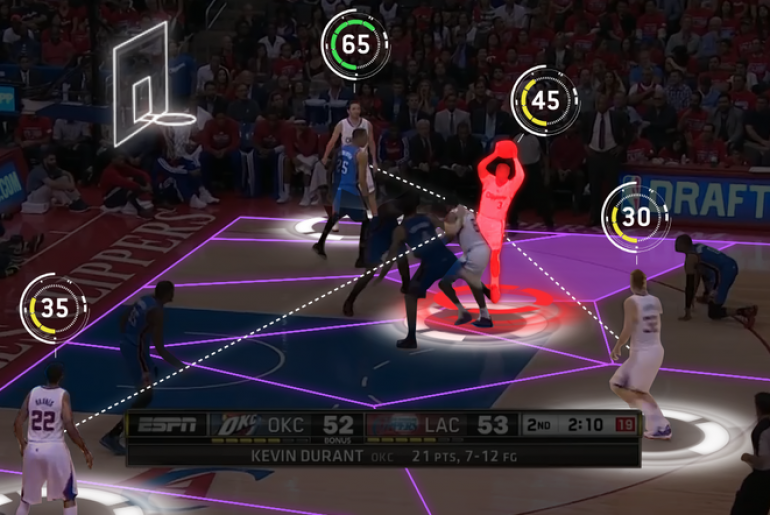The game of basketball has been around for decades, and it’s firmly established as one of America’s favorite sports. Four in 10 Americans now say they follow college basketball. But while it’s in some ways timeless, it’s also – like everything else – sensitive to ever-evolving technology. And whether they’re downloading a March Madness 2020 bracket template or checking out LeBron James’ Twitter, consumers are loving it.
And the wider context in which basketball operates has also been in a state of change in recent times. The media landscape, for example, has also changed, with the Internet now playing a much larger role than before. This article will explore some of the major ways in which basketball has had to adapt to the changing media and sporting world in recent years.
Precision viewing
Watching a basketball game is now a highly precise endeavor. It’s possible to see everything in an accurate level of detail when watching a game, and this is down in no small part to the National Basketball Association’s – or NBA’s – decision to introduce what are known as SportVU cameras. These cameras are able to verify much of what goes on during the games and reduces the risk that it will end up being impossible to prove what exactly went on in one of those tight assists or rebounds.
The technology, which came about after a partnership with the firm STATS, has also enhanced the amount of data available to pundits, teams and players. Its benefits are summed up best by Steve Hellmuth, who served as executive vice president of operations and technology at the NBA at the time the move came about. “We are a league driven by data, and our expanded partnership with STATS provides our teams and fans with access to uncover groundbreaking statistics,” he said. “In this new era of statistical information, SportVU will be an invaluable resource for basketball executives and our passionate fans,” he added.
Wearable items
On the topic of big data, technology has also played a role in what basketball players wear while they’re out on the pitch, and what information those wearables collect. These days, it’s common to see a basketball player wearing a piece of kit such as headgear or a watch: those items are designed to collect information from the player on everything from heart rate to speed. It’s all part of the need for data in a numbers-driven sport – and of a desire to understand more effectively the way in which the game operates.
Television and media
The last decade or so has also seen a sharp rise in the volume of consumable media and information about basketball that has become freely available, which is perhaps no surprise given that so much data about it is gathered! Websites aiming to aggregate news and views about basketball have sprung up all over the place, and big names such as Basketball Insiders offer plenty of content. This is a real deviation from the control of basketball media prior to this point. In the past, cable sports channels such as ESPN had something of a monopoly over the distribution of basketball information, but now almost anyone can set up an online NBA community if they want to.
Social media accounts
Perhaps one of the most indirect effects that technology has had on the world of basketball has been the arrival of social media. Social media has enhanced the culture of celebrity around leading figures in many fields, and sport – and basketball in particular – is no exception. Some of the most famous American basketball stars are very active on social media, often in multifaceted ways. Take the example of the former Miami Heat player Dwayne Wade, who has almost nine million followers on Twitter! With followings like this, some basketball players are now choosing to create new income streams in the form of sponsored advertising – meaning that technology is increasing the lucrative nature of the game.
What’s clear, is that even basketball has not been immune to the increasing march of technology. Tech has had a profound impact on all sorts of things in the basketball sphere, ranging from in-game changes, like the arrival of wearables, to changes to the way the sport is watched and consumed. And with sports tech sure to evolve even further in the next decade, it looks like basketball’s days of change are not yet over.

